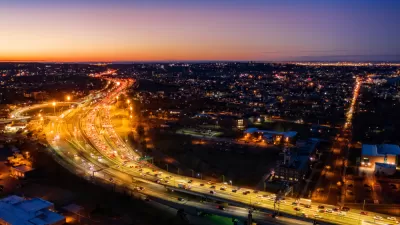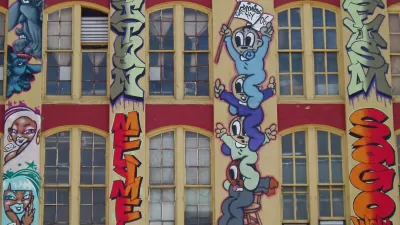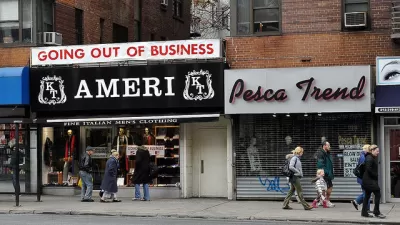The days of creeping gentrification are over. Contance Rosenblum reports on the New York artists who "rush about pell-mell in search of fresh terrain to colonize" and blows the cover on three of their up and coming territories.
Cheap rent, low crime, like-minded people and easy access to transit are key characteristics that draw artists to a neighborhood. Rosenblum explores three neighborhoods that each have the necessary traits for hipsterization, but for reasons explained in the article, "might not have the grit and authenticity of those that came before."
Stapleton, Staten Island, is fairly removed from NYC happenings, but the arts culture is well recognized and thriving. Similarly, Ridgewood in Queens is gaining attention as an attractive location for young artists. Recently, Gothamist ran the headline, "Local Paper Declares Next Big Neighborhood: Ridgewood". Though the neighborhood is primarily residential and lacks much of the studio space artists seek in a community, newcomer Matthew Mahler points out it's relatively safe, close to the train and he pays only only $600 for a 2 bedroom space.
The stretch of Upper Broadway between the Columbia campuses is another area of NYC that has seen an influx of young people pursuing artistic endeavors. Playwright, Claire Kiechel pays less than $700 for her portion of an apartment she shares with actor Sarah Skeist, who likes the neighborhood because of her proximity to fellow actors. Kiechel admits the neighborhood is not much to look at yet and "coffee is a major problem. And there are no local bars that serve craft beer."
She probably won't have to wait long for the neighborhood to fill with hipster amenities, though. In these days of rapid fire communication it's easy to keep abreast of up and coming trends in real estate. As author Rober Anasi points out, "Artists' neighborhoods turn over so quickly these days...The speculators are there practically before the artists themselves."
Thanks to Jessica Brent
FULL STORY: Follow the Drips of Paint

Planetizen Federal Action Tracker
A weekly monitor of how Trump’s orders and actions are impacting planners and planning in America.

Map: Where Senate Republicans Want to Sell Your Public Lands
For public land advocates, the Senate Republicans’ proposal to sell millions of acres of public land in the West is “the biggest fight of their careers.”

Restaurant Patios Were a Pandemic Win — Why Were They so Hard to Keep?
Social distancing requirements and changes in travel patterns prompted cities to pilot new uses for street and sidewalk space. Then it got complicated.

Platform Pilsner: Vancouver Transit Agency Releases... a Beer?
TransLink will receive a portion of every sale of the four-pack.

Toronto Weighs Cheaper Transit, Parking Hikes for Major Events
Special event rates would take effect during large festivals, sports games and concerts to ‘discourage driving, manage congestion and free up space for transit.”

Berlin to Consider Car-Free Zone Larger Than Manhattan
The area bound by the 22-mile Ringbahn would still allow 12 uses of a private automobile per year per person, and several other exemptions.
Urban Design for Planners 1: Software Tools
This six-course series explores essential urban design concepts using open source software and equips planners with the tools they need to participate fully in the urban design process.
Planning for Universal Design
Learn the tools for implementing Universal Design in planning regulations.
Heyer Gruel & Associates PA
JM Goldson LLC
Custer County Colorado
City of Camden Redevelopment Agency
City of Astoria
Transportation Research & Education Center (TREC) at Portland State University
Camden Redevelopment Agency
City of Claremont
Municipality of Princeton (NJ)





























